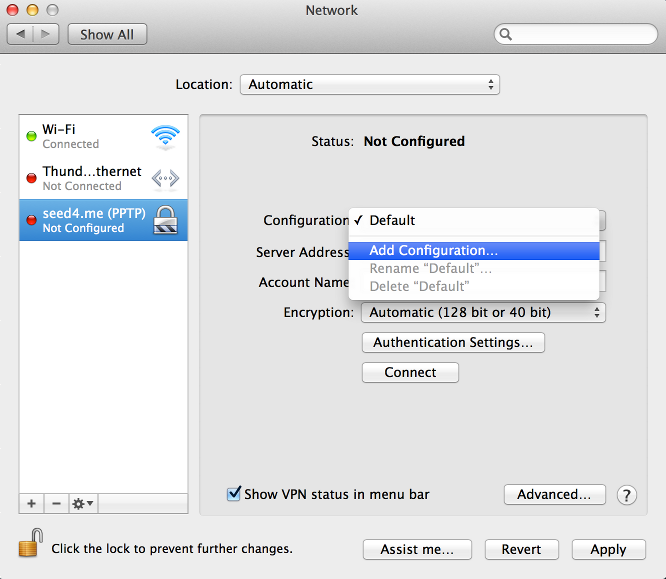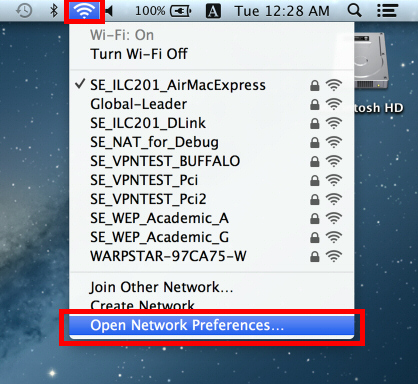
- Mac Os X Vpn
VPN-X Client for Mac OS v.2.4.1.44 VPN-X:Java/ Cross-platform P2P/SSL/TLS VPN solution. Client has an individual Virtual IP Address.It can help employees on errands use company LAN resource, help your friends access your computer play LAN games, all the network data is encrypted. Makes active the VPN Server Mac OS X 10.5 or later based on Intel processor. Auto configuration of the VPN Server Mac OS X. Using the VPN Server Mac OS X on a computer with a dynamic IP-addressation for connection to the Internet. Saving the configuration file. Load the configuration file to restore settings of the VPN Server. Features for iOS and macOS. MacOS Server lets you assign Volume Purchase Program (VPP) apps to devices — instead of a user’s Apple ID. This allows for the installation of VPP apps on iOS devices and Mac computers without configuring an Apple ID or sending an invitation. Buy OS X Server. Just like that, your Mac is a powerful server. MacOS Server brings even more power to your business, home office, or school. Designed to work with macOS and iOS, macOS Server makes it easy to configure Mac and iOS devices. It’s also remarkably simple to install, set up, and manage.
macOS Server brings even more power to your business, home office, or school. Designed to work with macOS and iOS, macOS Server makes it easy to configure Mac and iOS devices. It’s also remarkably simple to install, set up, and manage. Add macOS Server to your Mac from the Mac App Store for just $19.99.
Your command center.

macOS Server lets you set up and manage multiple Mac computers and iOS devices, right from your Mac. And it’s so simple to use, you don’t need an IT department.
macOS Server resources.
Everything you want to know about macOS Server, including training, services, and documentation.
VPN Server Configurator for macOS 10.14-10.5 • Access to your Mac and Local Network from anywhere in the World.
• The most secure access to your Local Network via the Internet.
• Setup a native VPN Server OS X without any special knowledge. |
|
Would you like to access your Mac via the Internet using only native Mac OS X, and be confident in the reliability and security of data transmission? You need a VPN Server. Now you can start a VPN Server on Mac OS X! Program configures and makes active the native VPN Server Mac OS X. With this program you can configure and make active the VPN Server Mac OS X without special knowledge how to do it. Enter the number of client computers, click the button 'AutoConfig' and you can connect to your Mac from anywhere! An Internet connection is the only thing required. Now you can configure and make active the native VPN Server Mac OS X for free in the Demo mode. |
|
What is a VPN connection? A VPN (Virtual Private Network) connection lets you connect to your LAN (Local Area Network) or a remote computer from anywhere. An Internet connection is the only thing required. You can connect to a VPN Server Mac OS X from Mac / iPhone / PC and you can also use all the services your LAN provides, such as: - Access to shared files and folders on your remote computers.
- Remote control of your computers in LAN.
- Screen Sharing.
- Printer Sharing.
- Web Sharing.
- Remote Apple Events.
- Other services granted by your LAN.
|

What is a VPN Server Configurator? The VPN Server Configurator configures and makes active the native Mac OS VPN Server. So when you connect to the VPN Server Mac OS X you are using only native Mac OS X services, just like in Server Mac OS X. With this program you can configure and activate the Mac OS X VPN Server without special knowledge to do this; enter the number of client computers, and click the button «AutoConfig». |
Main features of the VPN Server Configurator - Makes active the VPN Server Mac OS X 10.5 or later based on Intel processor.
- Auto configuration of the VPN Server Mac OS X.
- Using the VPN Server Mac OS X on a computer with a dynamic IP-addressation for connection to the Internet.
- Saving the configuration file. Load the configuration file to restore settings of the VPN Server.
- Usage of the configuration file when you create a VPN connection on a VPN Client.
The configuration file is created by using the AES256 encryption and has a .TXT format. So you can send the settings of your VPN Server by e-mail. - Auto saving of the configuration in the config-file for each user.
- Displaying the status of the VPN Server Mac OS X in the menu bar.
- Automatic generation of an unique password whenever a new user is created.
- Other features that make the configuration of the VPN Server and the VPN Client easier for either users or administrators.
WARNING!!! Do not use VPN Server Configurator on Mac OS X Server. |
How to configure a VPN connection
using the VPN Server Configurator? - L2TP or PPTP?
L2TP provides more secure connection. If the client computer supports a L2TP, it’s highly recommended to use it. - Auto configuration of the VPN Server.
- Please check your internet connection. If there is no connection, setup will fail.
- Go to the tab AutoConfig.
- Enter manually “ID VPN Server Configurator” or click “Generate ID”.
The ID VPN Server Configurator is used to open a configuration file on the client VPN Configurator or to restore settings from a file on the VPN Server. - Select the number of computers that will connect to the VPN Server Mac OS X.
- Press the button “AutoConfig”.
- Save the configuration file.
- Start the VPN Server Mac OS X.
- Open the configuration file on the client computer using VPN Client Configurator.
- Create a new VPN connection and save the settings.
- If you receive a message that the Local IP address is different from the Public IP address, it means that you are connected to the Internet through a router. Then you should configure the router to complete the configuration.
- Router settings
- Router settings (example for AirPort Extreme)
- Router settings (example for ASUS WL500)
- Go to the tab “NAT Setting - Virtual Server”
- Enable Virtual Server? - Yes
- Settings for L2TP
- Open UDP port 500
- Port Range - 500
- Local IP - Local IP address of the VPN Server. (You can get Local IP address on tab “AutoConfig”)
- Local Port - 500
- Protocol - UDP
- Open UDP port 1701
- Port Range - 1701
- Local IP - Local IP address of the VPN Server
- Local Port - 1701
- Protocol - UDP
- Open UDP port 4500
- Port Range - 4500
- Local IP - Local IP address of the VPN Server
- Local Port - 4500
- Protocol - UDP
- Settings for PPTP
- Open TCP port 1723
- Port Range - 1723
- Local IP - Local IP address of the VPN Server
- Local Port - 1723
- Protocol - TCP
- Save Settings to the router, then reload it.
- Start the VPN Server.
- Receive a Public IP Address on the tab “AutoConfig”. This is the IP address the VPN Server uses to access it from the Internet.
- Choose the tab «Start VPN Server at System’s start» if you want to start the VPN Server at your system’s start.Choose «Open at Login» in Dock menu if you want to start VPN Server Configurator at the system start.
|
How to configure a VPN connection for iPhone? |
How to configure a VPN connection for MS Windows 7? |
What happens next if you quit the VPN Server Configurator? VPN Server will continue to work after the quit from the VPN Server Configurator. |
Why does the program ask for administrator’s password while saving settings or changes? You can change the configuration files of VPN Server only if you have administrator’s privileges. |

Mac Os X Vpn
| Copyright © 2020 GreenWorldSoft . All rights reserved. | Site map |




